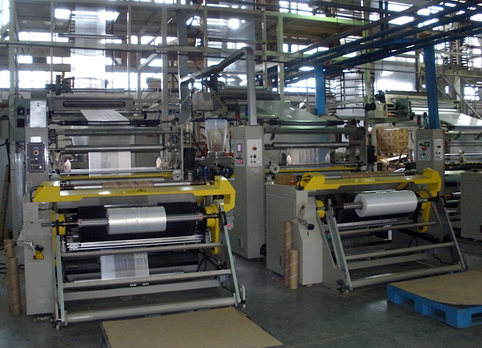Stretch film is an incredibly durable material mainly used for storage and transportation. Here’s an overview of stretch film and what it’s made of…
What Is Stretch Film Made From?
The most common stretch wrap material is linear low-density polyethylene or LLDPE. This is produced by copolymerization of ethylene with added olefins, the most common of which are butene, hexene and octene. The use of higher alpha-olefins (hexene or octene) gives rise to enhanced stretch film characteristics, particularly in respect of elongation at break and puncture resistance. Other types of polyethylene and PVC can also be used. Many films have about 500% stretch at break but are only stretched to about 100 – 300% in use. Once stretched, the elastic recovery is used to keep the load tight.
Metallocene resin is currently the rage in improving the performance of stretch film. Multi layered films are combining lower grade layers for cost with higher grade Metallocene layers to create competitively priced stretch film with higher performance.
Various additives can be added to the manufacturing process like pigmented polymers to create various different colours, mainly used in the food manufacturing industry so it is easier to detect if a piece of film was to accidently fall into the food chain. Certain other resins and/or additives are added to provide the puncture resistance, strength, sticky cling, and resistance to ultra violet rays, or to give it anti static properties.
Plastic waste is forever headline news, more recently manufactures can now produce stretch film which is fully environmentally friendly. A completely 100% oxo bio-degradable film will break down naturally over 1-2 years thus preventing the contribution to plastic waste.
Contact our Sales Team at Surepack for more info.
Stretch film is an incredibly durable material mainly used for storage and transportation. Here’s an overview of stretch film and what it’s made of…
What Is Stretch Film Made From?
The most common stretch wrap material is linear low-density polyethylene or LLDPE. This is produced by copolymerization of ethylene with added olefins, the most common of which are butene, hexene and octene. The use of higher alpha-olefins (hexene or octene) gives rise to enhanced stretch film characteristics, particularly in respect of elongation at break and puncture resistance. Other types of polyethylene and PVC can also be used. Many films have about 500% stretch at break but are only stretched to about 100 – 300% in use. Once stretched, the elastic recovery is used to keep the load tight.
Metallocene resin is currently the rage in improving the performance of stretch film. Multi layered films are combining lower grade layers for cost with higher grade Metallocene layers to create competitively priced stretch film with higher performance.
Various additives can be added to the manufacturing process like pigmented polymers to create various different colours, mainly used in the food manufacturing industry so it is easier to detect if a piece of film was to accidently fall into the food chain. Certain other resins and/or additives are added to provide the puncture resistance, strength, sticky cling, and resistance to ultra violet rays, or to give it anti static properties.
Plastic waste is forever headline news, more recently manufactures can now produce stretch film which is fully environmentally friendly. A completely 100% oxo bio-degradable film will break down naturally over 1-2 years thus preventing the contribution to plastic waste.
Contact our Sales Team at Surepack for more info.

